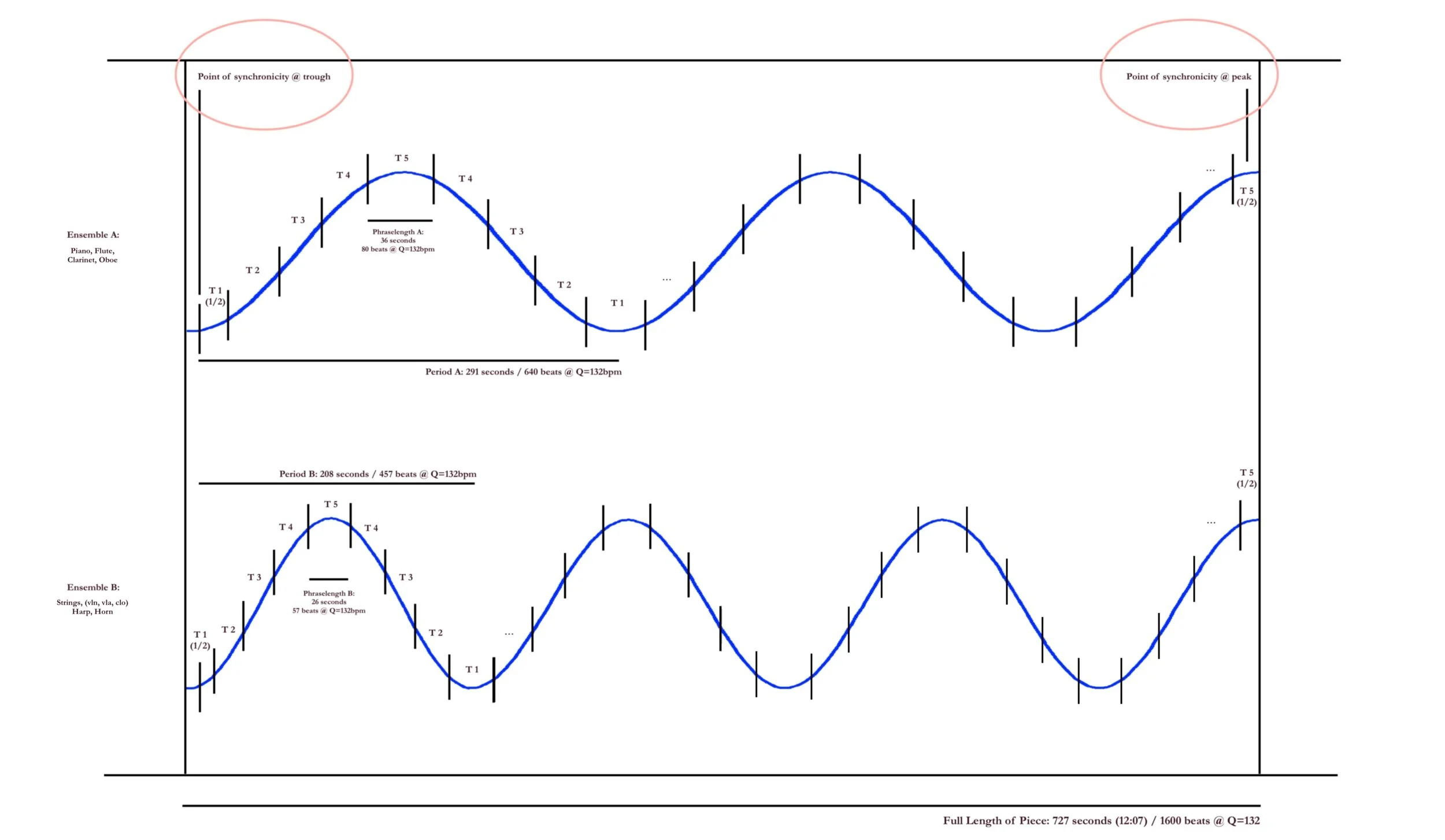ARCTIC FLOW
Presentation / Discussion Materials
All parts and full-score are temporarily downloadable HERE
Arctic Flow is emotionally influenced by observations of glaciers and mountainous terrain in Alaska during a family trip to Glacier Bay National Park in 2019. Progressions and regressions of rhythmic density throughout the piece represent the seasonal movements of glacial ice in these arctic regions.
Video Premiere
Click to view score: Full Score (in C)
Example 1: Defining Textures of Progressing / Regressing Density for “ARCTIC FLOW”
Example 2: Establishing an antiphonal setup
I decided to apply the “progressing rhythmic density“ effect that I saw in the Hurel (listed below in influences) but to do so with an antiphonal ensemble and within a palette of modal harmony that is present in much of my work.
Example 3: Dealing with a 5:7 ratio in interacting waves of rhythmic density
Why the 5:7 Ratio?
Other works that influenced my planning process for this piece:
Example 4: Attaching emotional imagery and current events to the established technical processes
Glaciers and polar ice tend to advance and retreat on a seasonal basis and I found this process in nature appropriate to relate to my use of progressing and regressing rhythmic density. While applying the different rhythmic densities, I also tried to employ modal harmony and textures that seem to reflect icy environments that hold unique beauty. These photos from my 2018 trip to Alaska were somewhat influential in my efforts to get into that mindspace.









